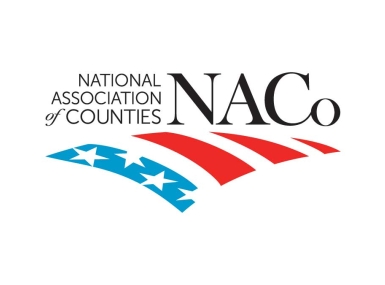U.S. Department of Treasury unveils changes to the State and Local Fiscal Recovery Fund Final Rule obligation definition
Author

Paige Mellerio
Upcoming Events
Related News

Key Takeaways
On November 9, the U.S. Department of Treasury (Treasury) unveiled the "Obligation Interim Final Rule" (Obligation IFR) that provides counties and other State and Local Fiscal Recovery Fund (SLFRF) recipients with clarification and flexibilities as it relates to the definition of "obligation" provided through Treasury's Final Rule, published in January 2022.
REMEMBER: The American Rescue Plan Act (ARPA) requires counties and SLFRF recipients to obligate all SLFRF funds by December 31, 2024. The Obligation IFR does not change the statutory obligation deadline and it remains December 31, 2024.
WHY DID TREASURY RELEASE THE OBLIGATION IFR?
- Counties and other SLFRF recipients had outstanding questions regarding the ability to use SLFRF funds to cover payroll costs and costs associated with award reporting and compliance beyond the December 31, 2024 deadline.
- Because of the nature of the county budgeting process, most counties are limited in obligating funds to be expended beyond one fiscal year. Additionally, most counties obligate payroll costs each pay period as opposed to an annual basis.
- NACo urged Treasury to provide counties with clarifications and flexibilities as it relates to the SLFRF obligation deadline.
WHAT DOES THE OBLIGATION IFR DO?
REMEMBER: The 2022 Final Rule defined "obligation" as an "order placed for property and services and entry into contracts, subawards and similar transactions that require payment".
The Obligation IFR keeps the definition of obligation defined by the 2022 Final Rule but provides counties and other SLFRF recipients with the ability to use SLFRF funds to require administrative costs related to compliance with other existing federal laws and SLFRF reporting and compliance beyond December 31, 2024.
The Obligation IFR enumerates the following as eligible expenditures beyond December 31, 2024:
- Reporting and compliance requirements
- Single Audit costs
- Record retention and internal control requirements
- Property standards
- Environmental compliance requirments
- Civil rights and nondiscrimination requirements
For the purposes of compliance with ARPA, expenditures that cover these eligible uses that are incurred beyond the obligation deadline will be deemed by Treasury as obligated by December 31, 2024.
Of particular note, the Obligation IFR does not provide direct flexibility for payroll costs beyond the December 31, 2024 obligation deadline, but the enumerated eligible expenditures include costs of recipient personnel whose time is required to comply with these requirements.
- Personnel costs must be calculated in compliance with the rules for compensation charged to federal awards (2 CFR 200.430)
HOW CAN COUNTIES TAKE ADVANTAGE OF THIS NEW FLEXIBILITY?
To take advantage of these new flexibilities provided through the Obligation IFR, counties must:
- Determine the amount of SLFRF funds that will be needed to cover eligible expenses beyond the December 31, 2024 obligation deadline
- Provide a documented justification for this amount
- Report both the amount and justification to Treasury by April 30, 2024
- Report the final amount expended in the award closeout
OF NOTE: Counties cannot estimate costs that will be made after December 31, 2026, other than administrative expenditures necessary to close out the SLFRF award in accordance with the Uniform Guidance, in this estimate.
HOW DOES THIS FLEXIBILITY IMPACT CONTRACTS AND SUBAWARDS?
The Obligation IFR clarifies that a county or other SLFRF recipient cannot change or amend the terms of a subaward or contract after the December 31, 2024 deadline if it would require the county to re-obligate funds or obligate additional funds.
A county would be allowed to replace a contract or subrecipient after the December 31, 2024 date if:
- The county terminates the contract as a result of the contractor or subrecipient defaulting, going out of business, or it is otherwise determined they can no longer carry out the terms of the award
- The county and subrecipient mutually agree to terminate the contract
- The contract or subrecipient is terminated after finding the initial award was improperly made
A county that re-obligates funds to a new contractor or subrecipient after the obligation deadline will be considered to have used its funds to cover an obligation incurred prior to the obligation deadline if:
- Any of the three situations above is present and
- If the original contract or subaward being replaced was entered into by December 31, 2024.
DOES THE OBLIGATION DEADLINE APPLY TO SUBRECIPIENTS?
The Obligation IFR clarifies that subrecipients are not subject to the December 31, 2024 obligation deadline but all SLFRF funds must be expended by December 31, 2026 (and September 30, 2026 for Surface Transportation and Title I projects).
WHEN DOES THE OBLIGATION IFR GO INTO EFFECT?
Immediately. There will be no public comment period for the ways in which Treasury amended the obligation definition, however, counties may provide public comment on the advantages and disadvantages of making this change 30 days after the Obligation Interim Final Rule is published in the Federal Register.
Related News

County Countdown – Dec. 15, 2025
Every other week, NACo's County Countdown reviews top federal policy advocacy items with an eye towards counties and the intergovernmental partnership.

County Countdown – Dec. 1, 2025
Every other week, NACo's County Countdown reviews top federal policy advocacy items with an eye towards counties and the intergovernmental partnership.

Counties Celebrate Key Permitting Inclusions in SPEED Act
NACo issued the following statement in response to the passage of the Standardizing Permitting and Expediting Economic Development (SPEED) Act (H.R. 4776), which advanced out of the U.S. House Committee on Natural Resources on November 20.
Resource
American Rescue Plan Resource Hub
